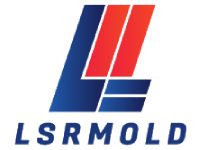Hello, Sunny here from LSRmold! Today, we’ll explore the essential role of mold tooling in plastic injection molding projects. Tooling determines the final shape and quality of designed parts, but it’s not just about a single mold. Multiple components collaborate in a compact structure to shape and solidify molten plastic effectively. In this post, we’ll dive into the types of injection molds, key components, and insights into material choices for mold manufacturing.
Types of Injection Molds
Before diving into mold types, let’s briefly understand injection molding. It’s a process where thermoplastic material is injected into molds, which have cavities designed to replicate the shape of the part being produced.
Here are some popular types of injection molds:
– Family Molds: These molds have multiple cavities with distinct geometries, enabling different parts (like housing, buttons, and internal brackets) to be molded together using the same material. They offer efficiency but may encounter issues like dimensional inconsistencies.
– Two-Plate Molds: These molds consist of a moving and a fixed half, meeting at the parting line. Simple and cost-effective, they’re ideal for producing small parts without intricate features but may be limited in flexibility.
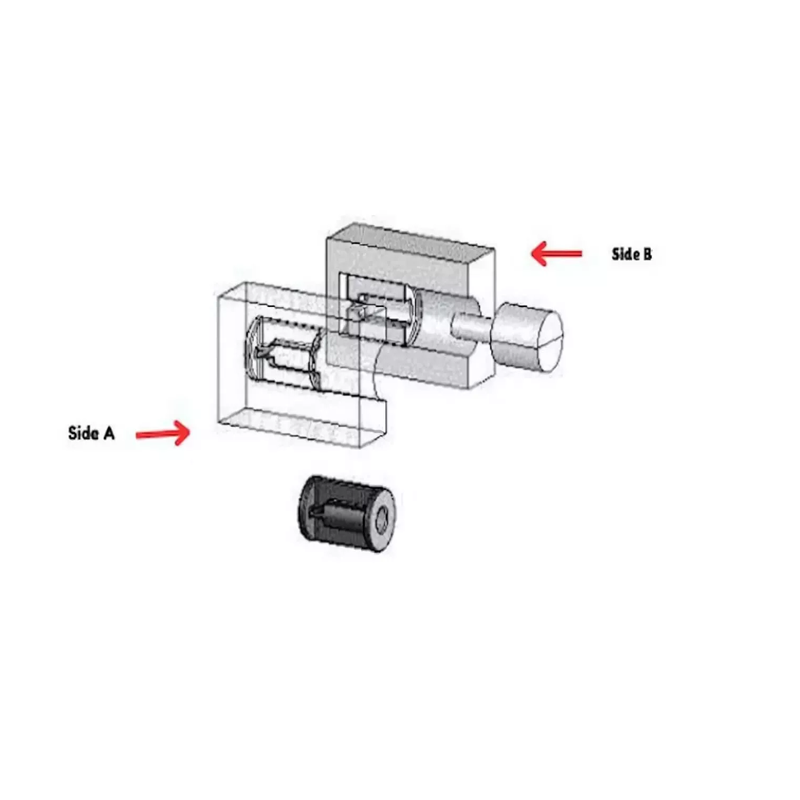
– Three-Plate Molds: With an additional plate separating the runner from the gate, these molds are suitable for complex shapes, though tooling and production costs are higher.
– Stack Molds: These molds align multiple cavities in a stacked configuration, doubling the output per cycle. Ideal for high-volume production, they also allow for varying cavity sizes, improving precision and efficiency.
– Unscrewing Molds: Best suited for parts with threaded surfaces (e.g., bottle caps), these molds employ a rotating core to unscrew and eject the part, ensuring precise threads.
– Insert Molds: These molds incorporate metal inserts, allowing materials like plastic to flow around them. Perfect for parts like threaded components or electronic connectors.
– Multi-Shot Molds: This mold allows for the injection of multiple materials or colors within a single cycle, ideal for multi-material products like handles or seals.
Core Components of Injection Molds
Key components in injection molds include the stationary Cavity A and the movable Cavity B. Cavity A defines the external shape, while Cavity B creates the part’s internal features. The alignment of these two sides ensures precise molding.
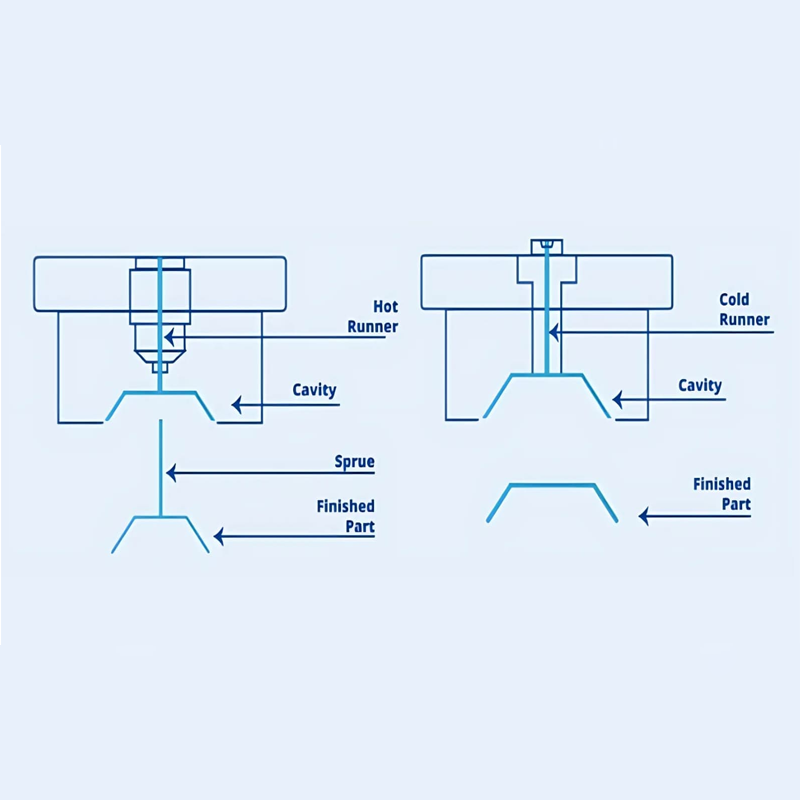
– Cavity A Side: Attached to the stationary plate, this side contains the runner system and cooling channels.
– Cavity B Side: This movable side opens and closes the mold and contains ejector systems for part removal.
Injection Mold Components by Function
Injection molds are complex systems with various components, each playing a specific role:
- Runner System: The runner guides the molten material from the injection nozzle to the mold’s cavities. It includes:
– Sprue Bushing: Channels molten plastic into the mold.
– Runner Network: Distributes material to different gates.
– Gate: The opening where material enters the cavity.
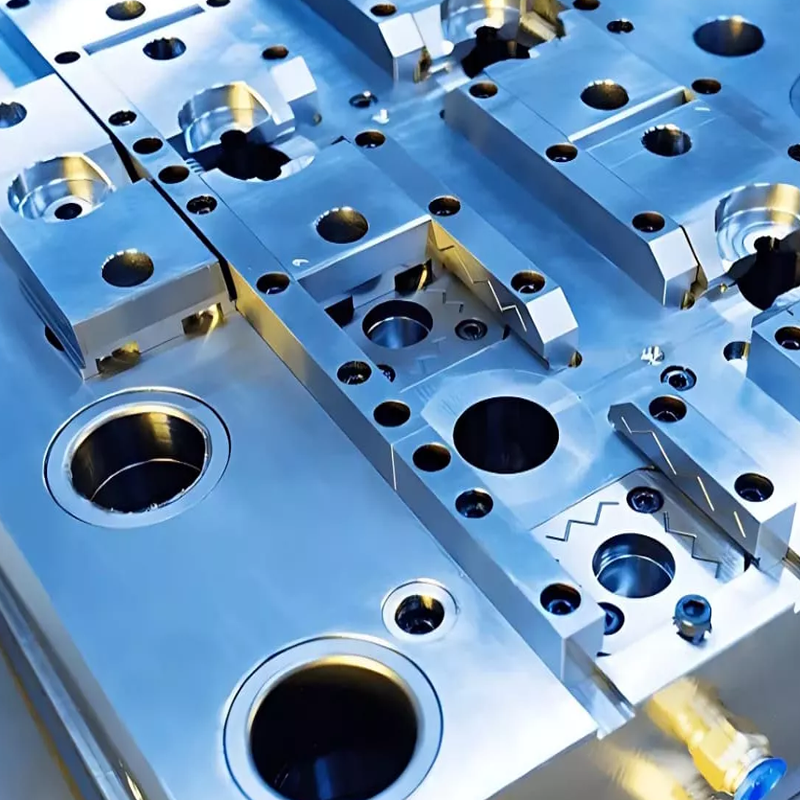
- Cooling System: Cooling accounts for a significant portion of the molding cycle. A proper cooling system prevents defects like warping and speeds up the process. This system uses baffles, thermal pins, and pumps to regulate temperature and flow.
- Molding Components System: These parts shape the final product:
– Core and Cavity: Define internal and external shapes.
– Molding Rods: Create narrow features like holes or shafts.
– Lifters: Facilitate mold opening and closing by maintaining draft angles.
- Venting System: Essential for preventing defects like bubbles, the venting system releases trapped air during injection, reducing pressure buildup.
- Guiding System: Ensures accurate mold alignment using guide pins and bushings.
- Ejector System: After cooling, ejector pins ensure smooth part removal without damage.
Auxiliary Systems
Supporting systems like ejection and cooling help streamline the molding process. Auxiliary setups such as lifting eye bolts allow for easy mold relocation, while KO holes provide space for ejector rods.
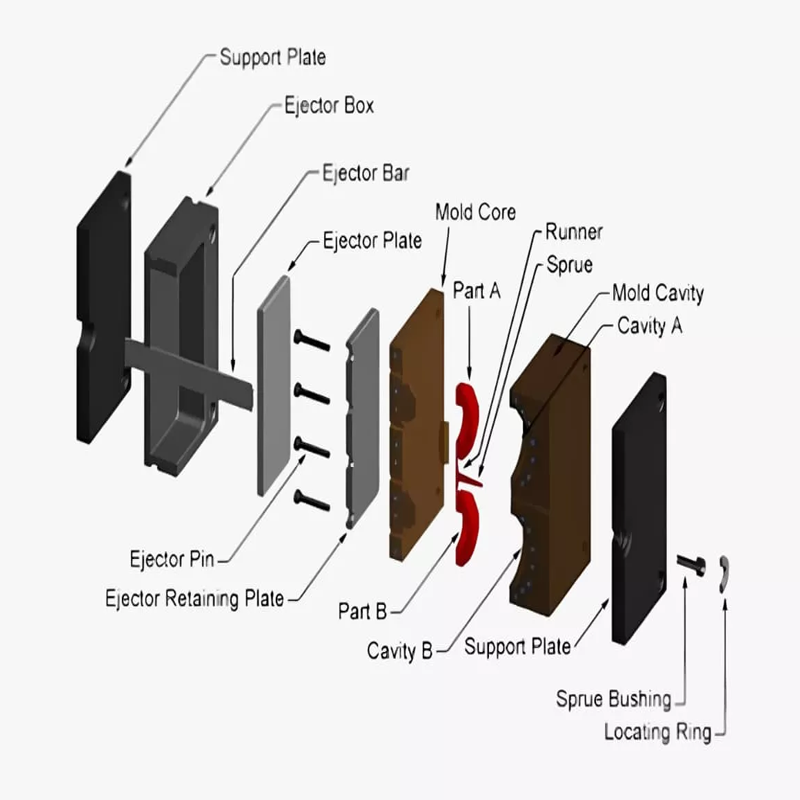
Handling Dead Corners
Dead corners (like undercuts or deep channels) complicate molding but can be tackled with slides, hydraulic cylinders, and angled ejectors to reach tricky areas.
Materials for Injection Molds
When it comes to mold material, several metals are commonly used:
– Carbon Steel: Common and cost-effective for general molding.
– Stainless Steel: Ideal for high-strength applications, resistant to corrosion.

– Aluminum: Lightweight and efficient for shorter runs.
– Beryllium Copper: Known for high thermal conductivity, making it ideal for cooling systems.
This overview of mold tooling and components illustrates the precision, complexity, and functionality required to produce high-quality injection-molded parts. Whether you’re designing a multi-cavity mold or optimizing the cooling system, each component plays a vital role in ensuring the part meets quality standards.
Have questions or want to learn more? Contact us at LSRmold for expert insights and custom solutions!
